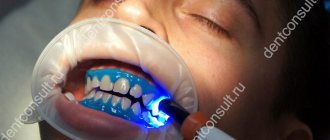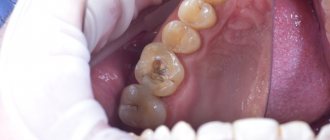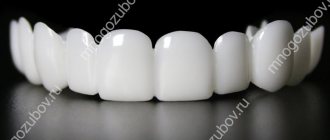Teeth are composed of minerals that provide high strength and prevent premature wear. But due to insufficient oral hygiene or pathological processes, they are affected by caries, which requires mandatory treatment by a dentist. The doctor carries out actions to eliminate the problem in several stages. The final step is filling. Dentistry in Kyiv successfully copes with this task. Doctors have a variety of materials in their arsenal that allow them to restore the entire structure of the tooth.
Requirements for fillings
Filling teeth protects them from infection, restores functionality, and improves aesthetic appearance. The result of treatment largely depends on the choice of filling material. It must meet the following requirements:
- do not pose a health hazard;
- be durable and wear-resistant;
- have good tightness;
- Match the color to the natural shade of the teeth.
Before the procedure, you should consult with your dentist. Modern technologies and materials make it possible to select a tooth filling as accurately as possible, taking into account its shade, texture and transparency.
When is a chemical filling preferable?
You might think that such a concept as a chemical filling has long ceased to be relevant. But using new technologies does not mean ignoring older ones. For example, it is better to place a chemical filling at the initial stage of caries, if we are not talking about the front teeth. This allows you to prevent its re-development due to the release of fluoride and additional protection of the enamel. But in case of significant damage to the crown, light-curing fillings are simply irreplaceable; a composite can solve the most complex problem. It combines two competitive features of the material at once - the ability not only to make a smile more aesthetically pleasing, but also to restore the functionality of damaged molars.
At the same time, the geleocomposite is not installed on “sevens” and most often on “sixes” due to improper light polymerization of the material. Because of this, there is a risk of performing work deviating from the technology and thereby reducing the service life of the seal.
Classification of fillings
According to purpose, filling material is divided into 2 groups.
Temporary fillings
The name of the species speaks for itself. Such fillings are also called diagnostic fillings. They are designed to temporarily eliminate a defect, therefore they are characterized by low strength and short service life.
The temporary filling can be easily removed if necessary. The dentist uses it to close a carious cavity when the tooth is very deeply affected, as well as when it is necessary to remove the pulp. When all the risks have passed and the doctor is convinced that everything is fine, the temporary filling is replaced with a permanent one. This filling is performed using one of the materials:
- aqueous dentin – powder, liquid;
- special cements, for example, zinc phosphate;
- dentin paste – powder, oil;
- polymers are special light-curing materials.
Temporary fillings are often used to diagnose a disease, or when there is a need for long-term treatment. For example, if a doctor cleans canals, he uses temporary material. If there is no pain or swelling, it is replaced after a few days.
Such fillings are placed to isolate the tooth cavity or fix the arsenic mass before extracting the nerve. The doctor leaves them for different periods - from 1 day to 2-3 weeks. The material hardens immediately, but since it is fragile, it is better to eat an hour or two after the procedure.
Proper care after installation
A large number of patients who have had light-curing fillings in the past think that they can immediately eat any food and there are no restrictions. In fact, a competent specialist will definitely warn you that it is better to wait at least 2 hours before starting a meal. But these are not all the rules that must be followed in order for the filling to retain its properties for as long as possible.
Basic recommendations
- The existing restrictions should not scare you; it is important to comply with them only for the first time - at least for three days. Dentists' advice is as follows: Avoid any products containing dyes - both artificial and natural. This is in addition to the obvious, for example, sparkling waters, black tea, coffee, as well as juices (blueberry, cherry, pomegranate), beet dishes. Otherwise, you should expect some staining of the filling material, which will negatively affect the aesthetics of your smile;
- Avoid starchy and sweet foods so as not to create favorable pathogenic microflora;
- To further strengthen the filling, include more grains, vegetables and fruits in your diet.
And pay attention to the presence of pain in the area of recent intervention. This is allowed for 2-3 days, as it can be caused by a traumatic injection with anesthesia; if the tooth continues to pull and ache, contact your doctor.
If you are confident in the specialist, but pain still occurs, perhaps this is an individual reaction. Alternatively, you may be given a special coating that will seal the dentinal tubules and solve the problem.
Types of permanent fillings
There are many types of permanent fillings. Some of them are practically not used in dentistry today, others are being improved by scientists, which opens up new horizons in medical practice. Preference should be given to one or another material, taking into account the size and location of the tooth in the cavity. You should consult your doctor. He will tell you which fillings are best to install in a particular case.
Metal options (amalgam)
Based on metal alloys. The composition contains mercury, which has a toxic effect on the body. Because of this, they are practically not used in modern practice. Amalgam fillings also contain:
- silver – responsible for strength, has an antiseptic effect;
- tin – provides hardening;
- copper – guarantees a good fit to the tooth.
The material has anti-carious properties, good ductility and wear resistance. Only an experienced doctor can install it. The rare use of amalgam is due to its disadvantages:
- risk of allergic reactions;
- unaesthetic appearance;
- impact on the natural color of enamel;
- low level of adhesion;
- poor adhesive qualities.
Amalgams are not placed on central incisors and canines. They are contraindicated for patients who have metal structures in the oral cavity.
Cement - budget option
Cement fillings were used by dentists until medical science reached a higher level. They are a powder based on zinc oxide with impurities. The price of this material is low, it has anti-caries properties and prevents the development of secondary caries. Installing it is easy. Despite their advantages, cements are rarely used because they also have negative qualities:
- rapid darkening and erasing;
- poor fit to the walls;
- low level of adhesion;
- provoking allergic reactions;
- low strength.
Experts do not recommend using cements for filling in patients under 35 years of age. This is due to the fact that the density and hardness of the material is greater than that of dental tissue, which is why the enamel is quickly destroyed. Further, the tissue is damaged.
Amalgam black
The main, durable and proven material is amalgam . It is mercury mixed with silver, tin and copper. It is used to fill the inside of teeth. Amalgam fillers are quite hard, relatively inexpensive and durable. They have antimicrobial properties, which means that they fight against the growth of bacteria and thus prevent tooth decay. For most interior applications where aesthetics are not a primary concern, they are a good choice.
The disadvantage of amalgam is its color. Classic amalgam has no chemical bond with the tooth.
Plastic options - a breakthrough in dentistry
Plastic fillings are characterized by excellent strength and long service life if installed correctly. Plastics are made from the following materials:
- Acrylic acids, which are toxic to the human body. This composition can provoke allergies in the patient. Often pores appear in it, which threatens to increase the risk of secondary caries. These dental fillings quickly darken due to smoking and drinking drinks containing dyes. Acrylic acids negatively affect the pulp and often provoke the occurrence of pulpitis.
- Epoxy resin. Its toxicity is much lower. Fillings of this type are installed on chewing teeth, because they darken over time. Resin is not suitable for restoration of the frontal group due to its fragility.
The cost of plastic fillings is reasonable. They are easy to match to the tooth color because they come in many shades.
The cost of plastic fillings is reasonable. They are easy to match to the tooth color because they come in many shades.
Composite Curable Types
Chemical composites contain an organic matrix (approximately 70%) and inorganic particles (at least 30%). The seal consists of a main part and a catalyst. Its advantages:
- high strength;
- uniform curing;
- inertness to saliva;
- excellent wear resistance.
Composites harden in a matter of seconds, so the doctor’s actions must be as fast as possible. Only a good specialist can deliver them efficiently. In addition to restoration work, the material is also used to fix mobile teeth with periodontitis.
Types and methods of filling
There are different methods and types of filling teeth with fillings. Among the main techniques for applying filling mass are the following:
- Acid etching. When using this method, the tooth surface is pre-treated with a special acid. Then all roughness is ground off to improve the shrinkage of the material.
- Bonding. The possibility of using this method depends on what types of filling materials were used. The fact is that bonding is only suitable for filling with plastic. A liquid plastic mixture is placed on the damaged tooth surface, which seals all the holes.
- Adhesive technique. In this case, the filling material is attached to the tooth surface under the influence of photopolymer rays. This technique is used only for the restoration of teeth in the front.
- Sandwich technique. Few people know which fillings are best to place when using this method. The use of sandwich technology involves the addition of two materials. The upper part is made of composite, and the lower part is made of glass ionomer cement.
There is another common filling method - using a pin. It is needed to create a reliable frame on which the filling material will be attached.
Photopolymer – light-curing materials
Photopolymer filling is considered the highest quality. Lighting composites represent the latest generation of materials that provide excellent results. They are produced in the form of a paste that hardens under the influence of UV radiation from a special lamp. They are applied in layers (about 2 mm), which makes it possible to form the shape of the tooth as accurately as possible. Other advantages of the material:
- a wide selection of shades - allows you to choose the desired color, which makes the filling invisible to others;
- strength;
- application for restoration of anterior and lateral teeth;
- low toxicity;
- the highest aesthetic properties compared to other materials;
- slight shrinkage.
A photopolymer filling has virtually no disadvantages. If the restoration technology is followed, it will last for many years. The only negative is the higher price when compared with plastic and cement materials. But the expenses are justified, because the patient receives high quality. Today, dental clinics often work with photopolymers.
What material is better for fillings on the chewing surface?
Most likely, the dentist will offer you a choice of several materials that differ not only in their features, durability, but also in price. Choose the most expensive option available to you; it will last longer and look better.
The most expensive fillings in the world are installed in the UK. One trip to the dentist and an ordinary cement filling, which in Russia can be placed under a compulsory medical insurance policy, will cost a couple of hundred dollars.
At the Clarimed clinic you can fill a tooth for 1,155 rubles (CIS). The consultation is free, as are any questions about fillings, treatment plans, prices, durability, or anything else that worries you before the procedure. Call us, we work around the clock.
How does the filling installation process work?
Filling is carried out in several stages.
- Examination and assessment of the condition of the tooth. The doctor determines the size of the lesion and finds out whether the inflammation has spread to the pulp.
- Anesthesia. Tooth filling is carried out under local anesthesia: one or two injections freeze the gum around the diseased tooth and the patient does not feel pain during further manipulations.
- Tooth preparation. The doctor drills the tooth, removing the affected tissue. At the ViDentis clinic, specialists work in binoculars - special microscope glasses in which the smallest details are visible. This allows you to preserve healthy tissue as much as possible, drilling only the areas affected by caries.
- Application of filling material. We use a layer-by-layer technique of applying polymer to the tooth and drying each layer with ultraviolet light. This allows you to achieve high strength and excellent appearance. Aesthetic restoration is also carried out in the same way, when, with the help of filling, for example, a chipped cutting edge of the front teeth is restored. This is the most reliable way to place a filling, and the cost of treatment does not increase.
- Turning and polishing of the filling. To ensure that the filling feels comfortable in the mouth, the doctor grinds off excess material, and so that plaque does not “get stuck” on the surface of the filling, it is polished.











